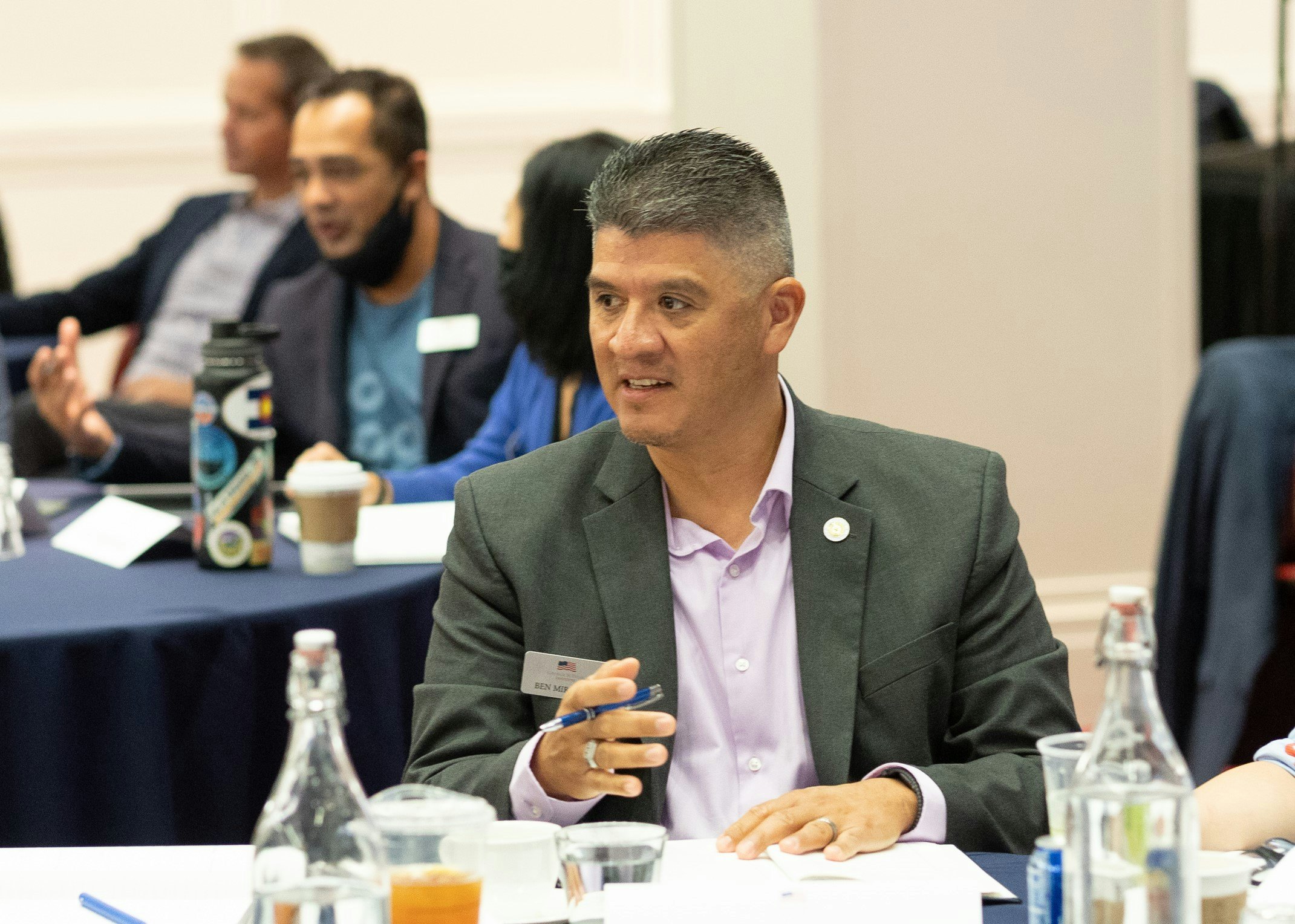A participant in the Bush Institute's Stand-To Vet Leadership Program talks about the need to build better connections in the veteran support space.
In this increasingly connected world, isolation is even easier to achieve. We can personalize everything: our music, our food, our news, our relationships. We can increasingly compartmentalize and segment our lives, creating a personal echo chamber that confirms what we already believe.
This is especially true in the “veteran support” space. Many of us who are working to support veteran transition fall into specific categories: health and wellness, higher education, employment, recreation. We’re not alone in that category, we know the others who are working in that category, and most of us try to collaborate as best we can.
For me, the Stand-To Veteran Leadership Program is breaking down the barriers that exist between those categories, and gives me a glimpse of a possible future.
I’m a mental health provider. I could also be considered to be in the nonprofit space, but veteran mental health is my primary focus. As such, there are some of my fellow VLP scholars who I would naturally interact with, considering our backgrounds in mental health. Cicely Burrows-McElwain, with the Substance Abuse and Mental Health Services Administration, for example, or Meaghan Mobbs, a Clinical Psychology Doctoral Student with Columbia Univeristy. There are even non-clinicians that I would be likely to interact with, such as Michael Richardson from the Wounded Warrior Project or Richard Casper from CreatiVets. The point here is that I would be most likely only to connect and interact with others in the health and wellness space, and more specifically those who involved in the psychological aspect of transition.
That’s not the only area that we need to focus on during transition to post-military life, of course. It certainly wasn’t true for me, and it’s not true for any service member or family leaving the military. It is a critical part, and one that should be considered, in every transitioning service member, but it’s not the only one.
What the Veteran Leadership Program has done is bring together organizational leaders who are not one single category, but work across multiple categories. We are then introduced to each other, shown what our commonalities are, and suddenly the whole is greater than the sum of it’s parts. None of us are either/or, but and/both. Jennifer Goetz, as a Licensed Social Worker, is working in the mental health space and the higher education space. Michael Hutchings and Abby Malchow are working in the tech space and are working to make an impact on the mental health and wellness of service members and their families.
None of us are any one thing, any more than the veterans we are looking to support are any one thing.
Through these and/both connections, the silo that I exist in…mental health…is suddenly connected to silos in the employment space, the corporate space, the higher education space. We are no longer talking to only those who are focusing on what we focus on, but instead talking to those that we might have never come in contact with.
What would it look like for the service members, veterans, and families that we all want to serve if more of this were happening? Not just individually, but organizationally? If clinical mental health professionals were connected to executives in the corporate space? If those in the corporate space were connected to those in higher education? Not only would the possibilities be endless, but the gains would be tremendous. Not for each other, but for the fellow service members, veterans, and spouses we intend to serve.
Ronal Reagan said, “There are no constraints to the human mind, no walls around the human spirit, no barriers to our progress except those we ourselves erect.” The barriers that have been built in the veteran transition space haven’t been erected intentionally, but they are certainly there. It is through increasing isolation that we fortify these boundaries, and only through mutual connection that we break them down.
A respected community mentor of mine is a senior administrator in K-12 education. He happens to be a veteran, but long service to his community has made him much, much more. One of the most inspiring things is a sign in his office…above the door, on his table, several different places in his office. It reads, “Am I doing what’s best for the student?” This servant-focused leadership is a critical part of his success, and I’ve taken a similar approach. Are the things that I’m doing being done in the best interest of the veterans and family members I’ve chosen to serve?
Are the silos and barriers that exist in the best interest of those who have answered our nation’s call, and those who have supported them? The Veteran Leadership Program has showed me that, in spite of the greatest of intentions, these silos and barriers are hindering our progress. Breaking them down is the key to the success of any of us individually, and all of us collectively.
Duane France is a scholar in the inaugural Stand-To Veteran Leadership Program. He is the Director of Veteran Services at Family Care Center and the Executive Director of the Colorado Veterans Health and Wellness Agency, a nonprofit dedicated to reducing barriers that exist in accessing service member, veteran, and family member mental health services. With his involvement in Stand-To, Duane is actively working to create and distribute a model of all aspects of veteran mental health.






























